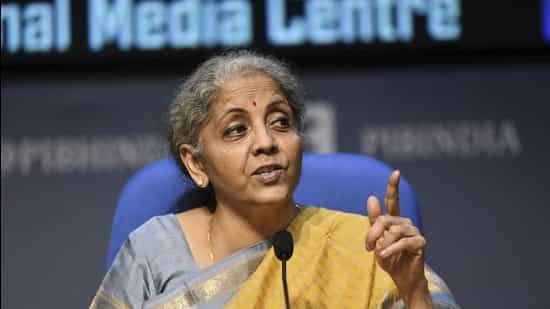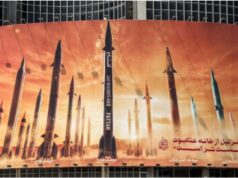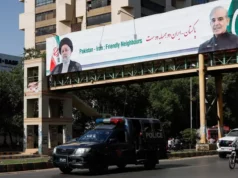Finance Commission Calls For Non – Lapsable Fund For Defence

Recently Laxman Kumar Behera, associate professor at Jawaharlal Nehru University’s Special Centre for National Security Studies, had brought out that the gap between resource requirement for defence and allocation, which briefly had narrowed from 27 per cent in 2013-14 to 14 per cent in 2015-16, has increased to 30 per cent in 2018-19 and 25 per cent in 2019-20.
In the 2019-20 budget, the Army’s capital share was just Rs 32,474 crore. This year amid the border stand-off with China, Finance Minister Nirmala Sitharaman announced a near 19 per cent jump in the capital budget for the forces in 2021-22.Even though the overall defence budget, however, saw a rise of just 1.5 per cent from Rs 4.71 lakh crore in 2020-21 to Rs 4.78 lakh crore in the next fiscal. Excluding the pension component, the budget is up 7.3 per cent.
In the previous budget, the allocation under the capital head was Rs 1.13 lakh crore. This shot up to Rs 1.34 lakh crore in the revised estimates, primarily due to the additional procurement by the three services in wake of tensions with China. In 2021-22, this has been budgeted at Rs 1.35 lakh crore.
The near-negligible increase in the overall budget — despite a jump in capital budget — is due to a fall in allocation for pensions. While the defence pension stood at Rs 1.33 lakh crore in the current fiscal (revised to Rs 1.25 lakh crore), the next fiscal’s budget put this expense at Rs 1.16 lakh crore.
In a statement, the Ministry of Defence (MoD) said allocation under non-salary revenue to meet operational requirement has been increased to Rs 54,624.67 crore. This is 6 per cent over 2020-21.
The capital allocation for Defence Research and Development Organisation has been increased to Rs 11,375.50 crore — 8 per cent over FY21 and 8.5 per cent over FY20. The allocation for Border Roads Organisation has been raised to Rs 6,004.08 crore — 7.48 per cent over FY21 and 14.49 per cent over FY20, the MoD said.
In fact the rise in the capital budget will be just 0.4 per cent compared to the revised 2020-21 budget. The total defence budget is just 2.14 per cent of the GDP — or 1.62 per cent, excluding pension — and 10.4 per cent of the overall expenditure.
In view of the strategic requirements for national defence in the global context, the 15th Finance Commission has suggested the creation of a non-lapsable fund for defence modernisation, the panel said in a statement Monday. The 15th Finance Commission has recommended a Rs 2.38 lakh crore non-lapsable fund for modernisation in the 2021-26 period.
“The Union Government may constitute in the Public Account of India, a dedicated non-lapsable fund, Modernisation Fund for Defence and Internal Security (MFDIS),” the statement said.
Explaining the concept, the statement said the panel has recalibrated the relative shares of the Union and states in gross revenue receipts by reducing its grants component by 1 per cent. This will enable the Union to set aside resources for the special funding mechanism.
The commission said the fund may be called Rashtriya Suraksha Naivedyam Kosh.
It said the proceeds of the fund will be utilised for three purposes — capital investment for modernisation of defence services, capital investment for Central Armed Police Forces and modernisation of state police forces as projected by the Ministry of Home Affairs (MHA).
A “small component” will be used for welfare funds for soldiers and paramilitary personnel.
This fund will have four specific sources of incremental funding — transfers from the Consolidated Fund of India, disinvestment proceeds of defence public sector enterprises (DPSEs), proceeds from the monetisation of surplus defence land, and cost recovered of encroached land.
The maximum size of the recommended fund is Rs 51,000 crore per year, with any amount exceeding the same to be deposited into the Consolidated Fund.
“The unutilised amount from the normal budgetary allocations to the MoD and MHA for capital expenditure shall not be part of the Fund and should be governed as per the principles of the annual budget process,” the report said.
The Ministry of Defence would have exclusive rights over the use of the amounts deposited in the fund from the specified sources of revenue. The MHA will only be permitted to use the fund that is earmarked for it from the source of revenue, it said.
In 2020, China’s official defence budget stood at $179 billion, three times that of India’s.
While India’s defence allocation for 2020-21, including pensions, constituted 15.5 per cent of the budget, China’s official defence share was 36.2 per cent of the country’s budget.
In its latest report, the Swedish think-tank, Stockholm International Peace Research Institute (SIPRI) said China’s actual defence budget in 2019 was at $240 billion as compared to the official figure of $175 billion.
India’s defence budget for 2020-21 was also not adequate. It left the tri-services — Army, Navy and the Air Force — with little room for modernisation.
The capital outlay for the military, which is used for new acquisition and modernisation, saw a meagre 3 per cent rise, or Rs 3,400 crore, over the revised 2019-20 estimates.
The Indian Air Force, which is in the middle of expansion and buying nearly 200 new fighter aircraft, saw its capital budget lowered from revised estimates of Rs 44,869.14 crore to Rs 43,281.91 crore.
The services have been struggling due to such budgetary constraints for the last few years.
In 2018, then-Vice Chief of Army Staff Lt Gen. Sarath Chand deposed before the Parliamentary Standing Committee on Defence and noted the fiscal crunch the Army was facing. He said the budget 2018-19 had “dashed our hopes” of adequate modernisation of the force.
“Allocation of Rs 21,388 crore for modernisation is insufficient even to cater for committed payments of Rs 29.033 crore for 125 ongoing schemes, emergency procurement and other requirements,” Chand told the parliamentary panel.
The forces actually face a deficit because what they get allocated is much less than what they need for proper defence of India.



